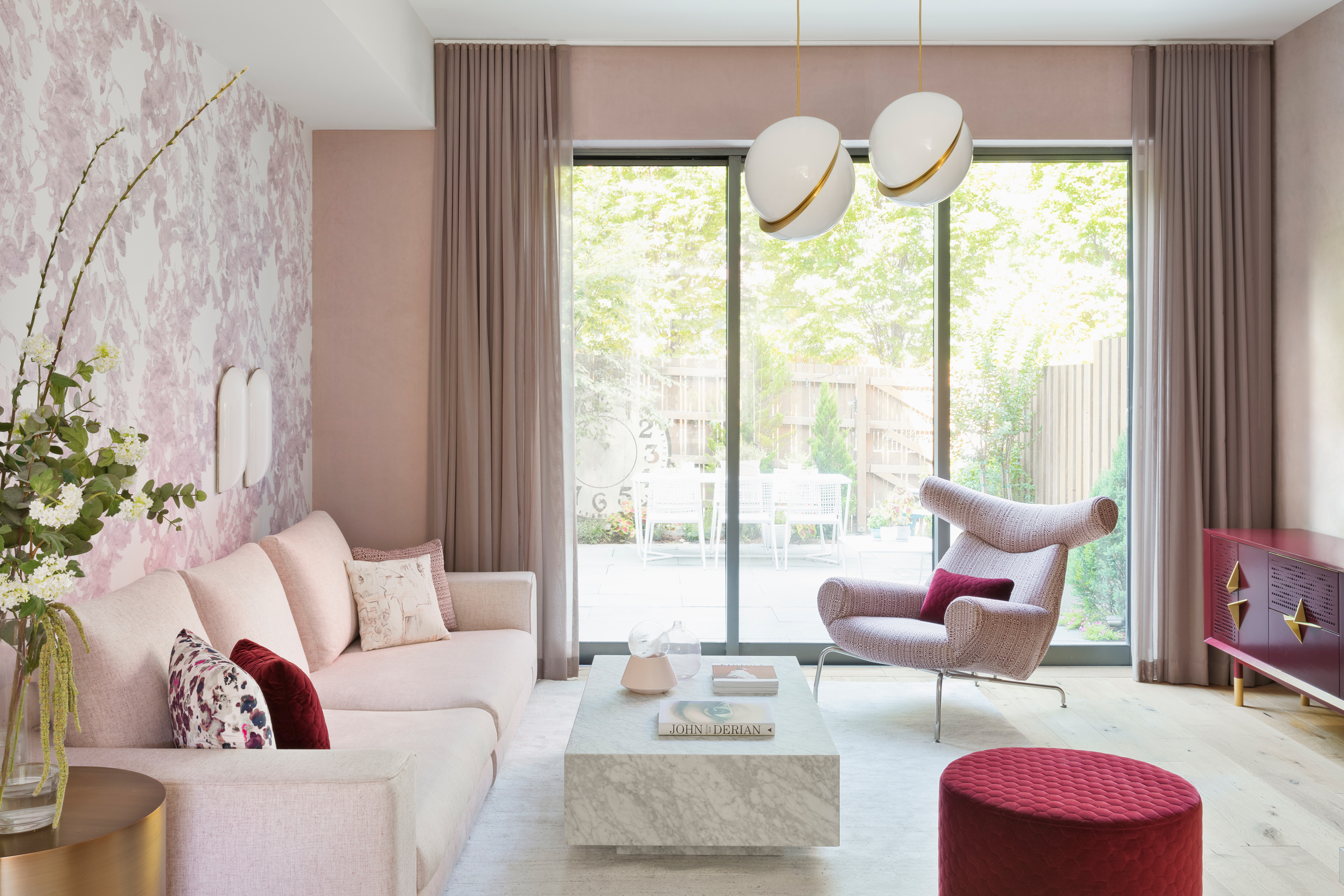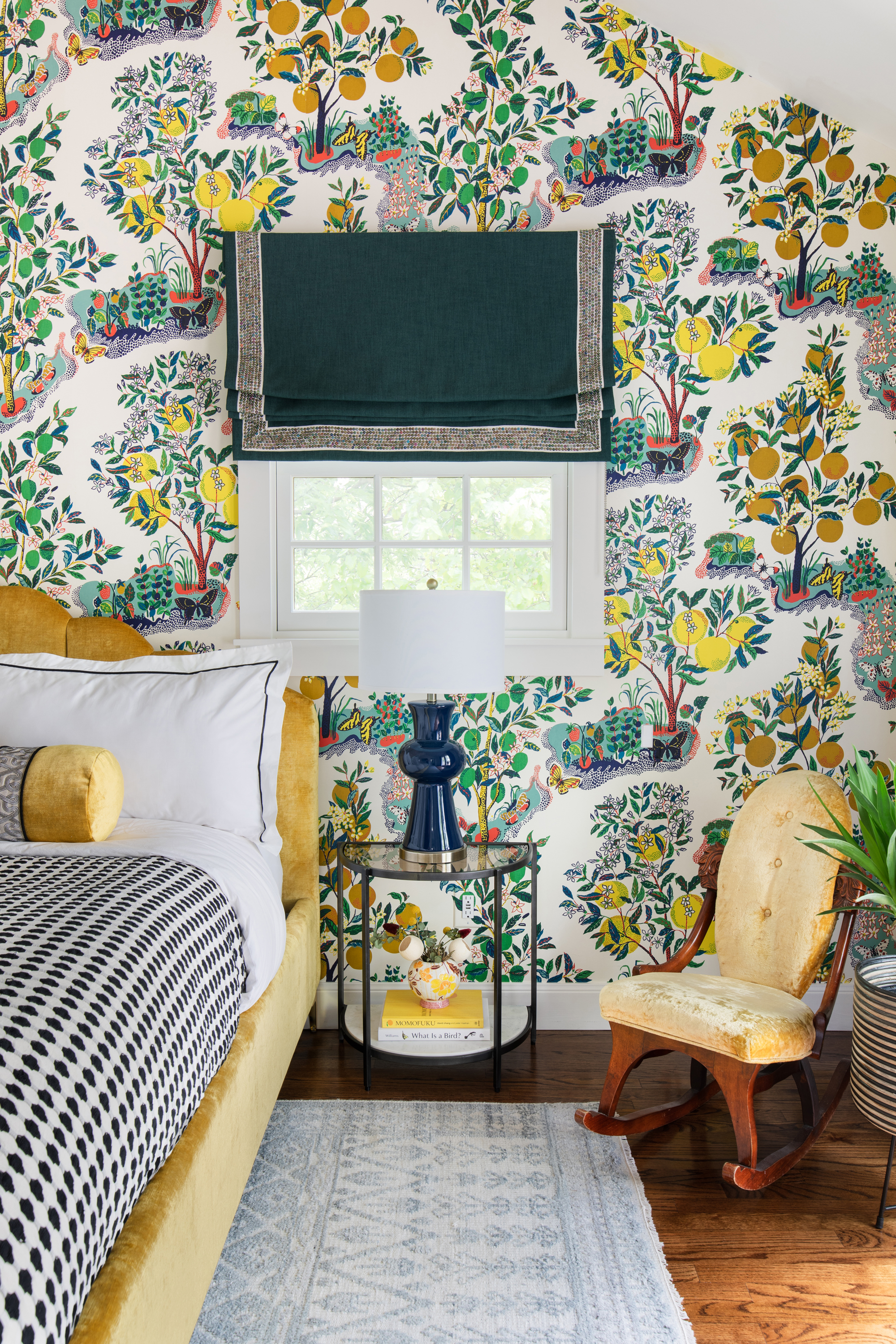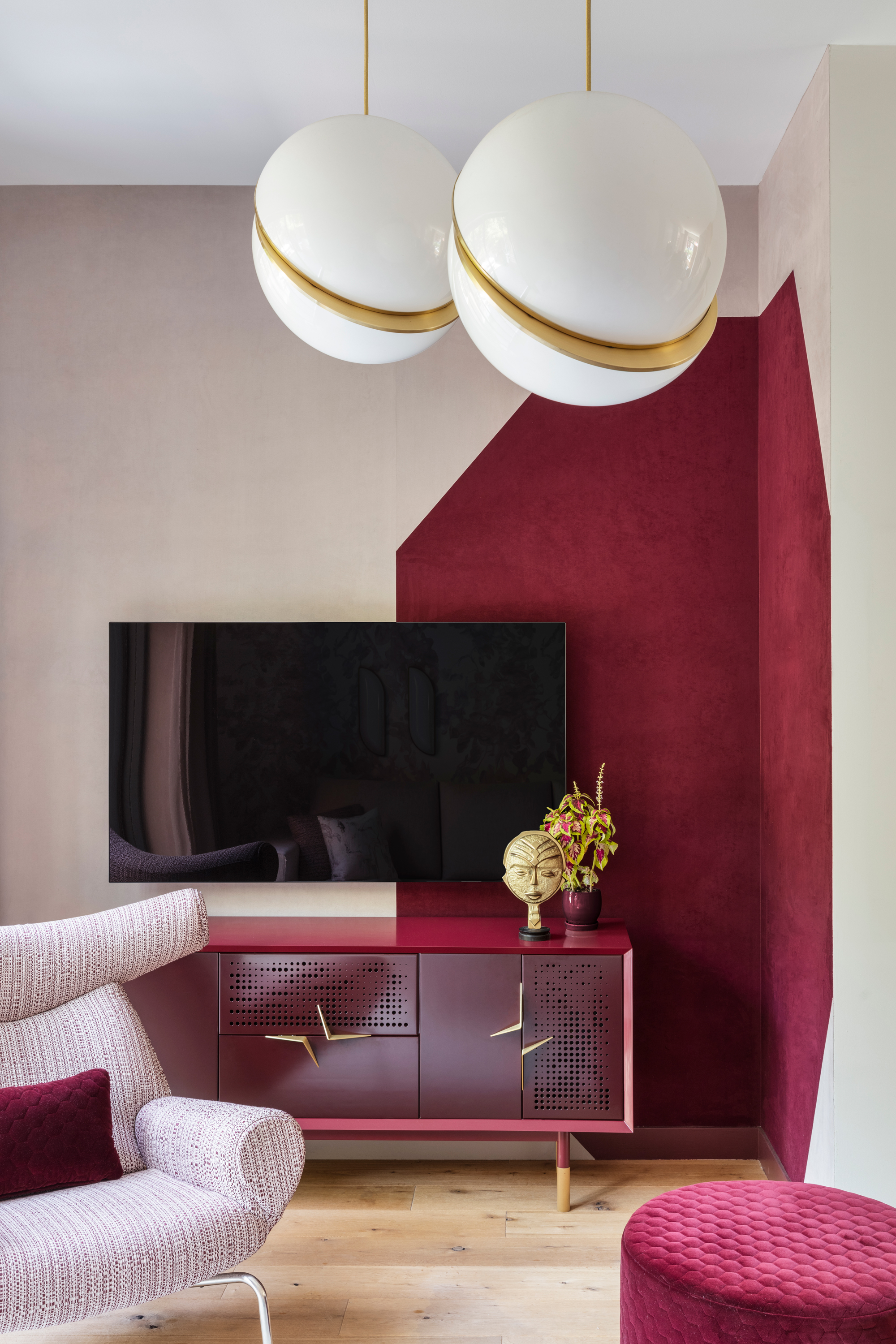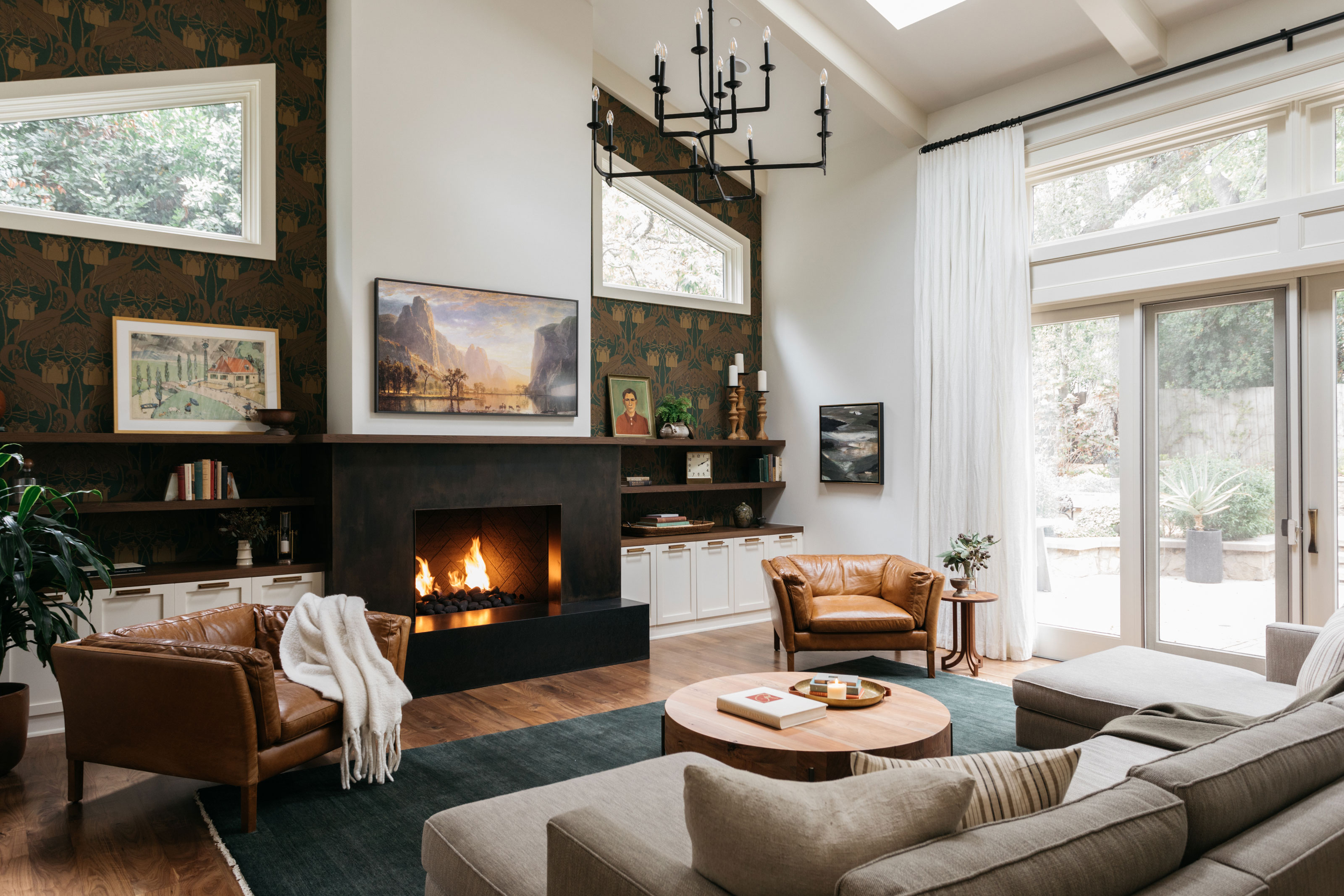Are accent walls out of style? This is how designers are using them now and beyond
The accent wall had a heyday in our homes, but is it still something we should consider today? These designers advocate for how to use them in a modern way


We’ve seen accent walls so often in the past decade that, ironically, they seem to have blended into the crowd of interior trends. Accent walls made their debut in the early naughties as a low-risk color investment, allowing people to experiment with bright colors and patterns in a failsafe way. At the time, they seemed like a passing fad, but decades on, they’re still hanging on; but is it by a thread?
Don’t answer that just yet. First, let’s hear from interior designers Stephanie Lindsey, principal designer of Etch Design Group, and Fanny Abbes, founder and creative director of The New Design Project, whose enduring faith in accent walls has seen them being used in fresh and innovative ways.
Here, they tell us why they believe this interior design trend has staying power and how to successfully incorporate the accent walls of today into our interiors.

Sophie is a home interiors writer and all-around design aficionado, currently studying interior design at London's KLC. For this article, she asked design experts how they're using accent walls in modern ways.
What do accent walls look like today?
An accent wall is an interior or exterior wall with a different color or material finish than the rest of the walls in the space. ‘Accent walls provide a focal point in a room, and they’re also a cost-effective solution to update your space,’ says Stephanie - not much has changed there.
Where accent walls have evolved, however, is in their sense of purpose. Interior designers are intentionally using them as more than a decorative feature. For Fanny from The New Design Project, as well as providing a valuable tool to add personality to a space, accent walls are a conscious design decision, ‘whether that's… to zone the space, a visual accent to guide focus and make a targeted impact, or merely a necessary financial decision.’ Accent walls are also great for drawing attention to an architectural feature or concealing a design mishap!

Versatility is an accent wall’s greatest asset and something contemporary designers are exploiting. The only rule for accent walls is that they accent a wall; how is up to you. ‘Sometimes, even after furniture and accessories, a room can feel incomplete, so the space may be calling for wallpaper or architectural paneling,’ says Stephanie from Etch Design Group. Paneling is an easy way to add texture and depth to a minimal aesthetic, while ‘wallpaper can instantly add color and pattern to a cookie-cutter room.’
It doesn’t stop there. An accent wall could also be a wall of jazzy bathroom tiles, biophilia in a kitchen, repurposed old books in a cozy nook, or colorful built-in cabinetry in a living room - you get the gist! So, I wonder, is creative innovation the secret to the enduring appeal of accent walls?
What’s next for accent walls?
It’s clear that for accent walls to maintain their status quo in 2023, they need to feel fresh and updated. One approach is to think three-dimensionally, taking accent walls to living room corners, for example.
‘Accent corners and accent cabinetry (whether kitchen or not) offer an interesting alternative to the more classic painted accent walls as they are multi-dimensional, therefore adding even more depth to a space,’ explains Fanny. ‘Obviously, if you're dealing with a multi-directional accent, you need to be particularly mindful of how it will read from different angles,’ she says.

Another way to make accent walls feel current is to create value, giving accent walls a sense of purpose and direction. Fanny offers the pink and red suede accent corner in their Brooklyn Townhouse project as an example: ‘...we wanted to create a very impactful attention point. For that, we decided to use a strong geometric shape, a bold color, and a tactile material to speak to various senses,’ she says. ‘The intention was also to take away the attention from the TV in the foreground by diverting your eye to the oversized off-centered shape behind.’
In summary, the trick is to make accent walls integral to the overall design. You want them to seem like they’re part of the architecture instead of looking like you’re too afraid to step out of your color comfort zone!
How do you make accent walls work?
‘There are endless ways you can design an accent wall, but there are a few things to consider,’ says Stephanie. Firstly, ‘...it’s important to keep in mind whether the wall is a blank canvas or if there are windows or other features you will need to work around.’
Fanny agrees and reminds us not to neglect the skirting. ‘If the point is to make your wall treatment shine… the baseboards or any architectural details should always use the same color to avoid standing out,’ she says. The only exception is ‘if the design intention is to make the baseboard the center of attention.’

Don’t lose sight of the overall design concept. ‘Accent walls can deliver an amazing visual experience and, as such, should be carefully considered in adequation with the rest of the space,’ says Fanny. She suggests paying attention to details such as adjacent paint colors, textures, and patterns, and the light-reflecting (or absorbing) quality of different materials.
Stephanie and her team take a similar approach, ‘we like to use timeless patterns and colors that will complement the surrounding furniture and accessories,’ she says. Alternatively, she suggests using the accent wall to guide the rest of the scheme.
So are accent walls on trend again?
Once considered a trend, today, accent walls are re-emerging as a timeless feature and design approach. Thanks to their versatility, they are constantly reinvented in new and creative ways. Its multidisciplinary approach means accent walls can be molded to suit any aesthetic. However, while accent walls as a concept are timeless, how we accent the wall is not.
Be The First To Know
The Livingetc newsletters are your inside source for what’s shaping interiors now - and what’s next. Discover trend forecasts, smart style ideas, and curated shopping inspiration that brings design to life. Subscribe today and stay ahead of the curve.

Sophie is a home interiors writer and all-around design aficionado. With a degree in History of Art and Spanish, she has a keen interest in the influence of art, history, and culture in design. Having lived in Buenos Aires for five years, Sophie is an experienced communicator in both English and Spanish with a professional background in public relations and marketing. Sophie is also an interior design student at KLC, paving the way to tell stories through interiors that inspire, serve and create experiences worth remembering. Sophie currently writes for Livingetc, Better Homes & Gardens, and Foter Magazine.
-
 Turns Out the Coolest New Café is Actually In Your Kitchen — Here's How to Steal the Style of TikTok's Latest Trend
Turns Out the Coolest New Café is Actually In Your Kitchen — Here's How to Steal the Style of TikTok's Latest TrendGoodbye, over-priced lattes. Hello, home-brewed coffee with friends. TikTok's 'Home Cafe' trend brings stylish cafe culture into the comfort of your own home
By Devin Toolen Published
-
 5 Bathroom Layouts That Look Dated in 2025 — Plus the Alternatives Designers Use Instead for a More Contemporary Space
5 Bathroom Layouts That Look Dated in 2025 — Plus the Alternatives Designers Use Instead for a More Contemporary SpaceFor a bathroom that feels in line with the times, avoid these layouts and be more intentional with the placement and positioning of your features and fixtures
By Lilith Hudson Published